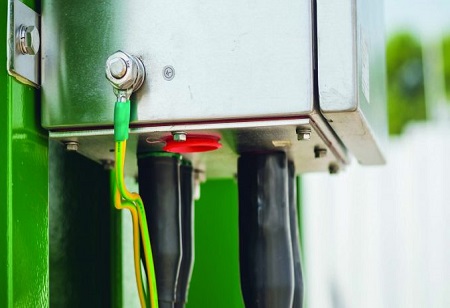Overview of Supply & Installation of Earthing Equipment Services
The supply and installation of earthing equipment is a critical service in the electrical industry, aimed at ensuring safety and functionality in electrical installations. Earthing, or grounding, is the process of connecting the non-current carrying parts of an electrical system to the ground. This connection provides a safe path for fault currents, preventing electric shocks and protecting equipment from damage. This comprehensive description will explore the types of earthing systems, the installation process, benefits, challenges, and best practices in providing these essential services.
Types of Earthing Systems
There are several types of earthing systems, each designed for specific applications and conditions:
- Plate Earthing: Involves burying a metal plate (usually copper or galvanized iron) in the ground. This method is effective for residential buildings due to its simplicity but requires a larger surface area.
- Rod Earthing: Utilizes a metal rod driven vertically into the ground. This type is particularly suitable for areas with low soil resistivity and is commonly used in both residential and commercial installations.
- Pipe Earthing: Involves using a metal pipe as an electrode. It is particularly effective in high-resistivity soils and is often employed in industrial applications.
- Strip Earthing: Uses a horizontal strip of metal buried in a trench. This method is typically utilized in industrial settings where larger surface areas are available.
- Chemical Earthing: Employs specialized electrodes that enhance conductivity through chemical reactions. This method is beneficial in areas with high soil resistivity.
Each type of earthing system has its advantages and disadvantages, which must be considered when selecting the appropriate solution for a specific application.
The Installation Process
The installation of earthing equipment involves several key steps to ensure effectiveness and compliance with safety standards:
1. Site Evaluation
A thorough evaluation of the installation site is essential. Factors such as soil resistivity, moisture content, and space availability must be assessed to determine the most suitable earthing system.
2. Selection of Earthing System
Based on the site evaluation, an appropriate earthing system is selected. This decision should consider soil characteristics, environmental conditions, and the specific requirements of the electrical installation.
3. Installation and Wiring
The chosen earthing system must be installed according to established guidelines and standards. Proper wiring ensures a secure connection between the electrical system and the earthing electrode, minimizing resistance and enhancing safety.
4. Testing
After installation, testing is conducted to verify that the earthing system functions correctly. This includes measuring earth resistance to ensure it falls within acceptable limits. Regular maintenance checks are also recommended to keep the system operational over time.
Benefits of Earthing Systems
Implementing effective earthing systems provides numerous benefits:
- Safety: The primary purpose of earthing is to protect individuals from electric shocks by providing a low-resistance path for fault currents to flow safely into the ground.
- Equipment Protection: Proper earthing prevents damage to electrical appliances caused by overloads or surges, reducing maintenance costs and prolonging equipment lifespan.
- Stability: An effective grounding system stabilizes voltage levels within electrical installations, which is crucial for sensitive electronic equipment that can be affected by fluctuations.
- Compliance with Regulations: Many regions have strict regulations regarding electrical safety; proper earthing ensures compliance with these standards, reducing liability risks for property owners.
Challenges in Earthing System Installation
While supplying and installing earthing equipment offers significant benefits, several challenges may arise during the process:
- Soil Conditions: Variations in soil resistivity can complicate installation efforts. In areas with high resistivity or rocky terrain, additional measures may be required to ensure effective grounding.
- Cost Considerations: The cost of materials and labor can vary significantly based on location and project complexity. Budget constraints may limit options for some clients.
- Technical Expertise: Proper installation requires skilled professionals who understand electrical systems and local regulations. A lack of qualified personnel can lead to substandard installations that compromise safety.
Best Practices for Supply & Installation Services
To ensure successful supply and installation of earthing equipment, service providers should adhere to best practices:
- Conduct Thorough Assessments: Before installation begins, perform comprehensive site evaluations to understand soil conditions and select appropriate materials.
- Follow Industry Standards: Ensure all installations comply with relevant electrical codes and standards to guarantee safety and reliability.
- Utilize Quality Materials: Use high-quality materials that are resistant to corrosion and designed for longevity under various environmental conditions.
- Implement Regular Testing: Establish a routine testing schedule post-installation to monitor system performance and address any issues promptly.
- Provide Client Education: Educate clients on the importance of regular maintenance checks and how to identify potential issues with their earthing systems.
Conclusion
The supply and installation of earthing equipment are vital services that play an essential role in electrical safety. By understanding different types of earthing systems, following proper installation procedures, recognizing benefits and challenges, and adhering to best practices, service providers can ensure that their clients receive reliable solutions tailored to their specific needs. As technology advances and regulations evolve, staying informed about new developments in earthing technology will further enhance service quality and safety standards in this critical field.




